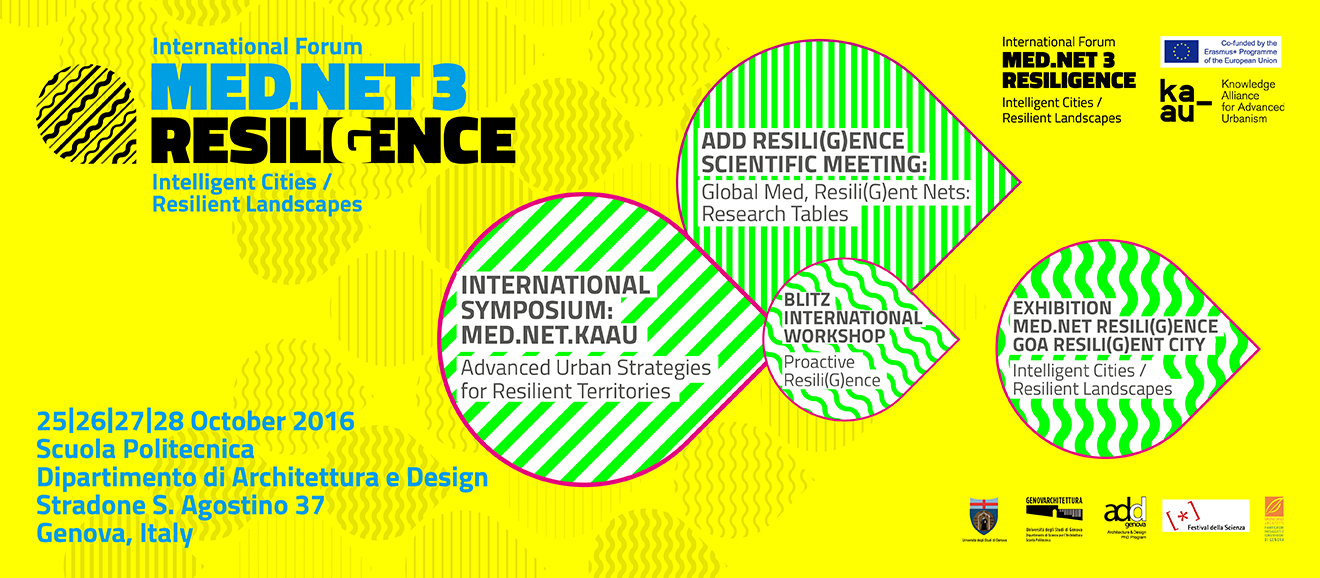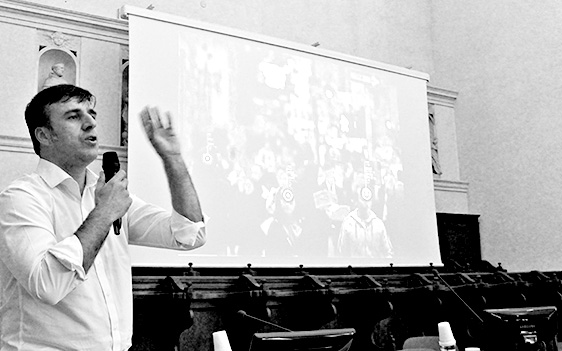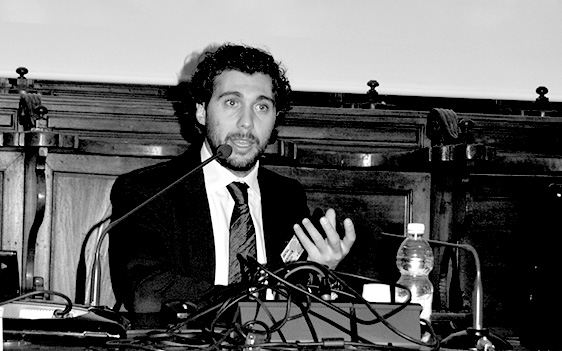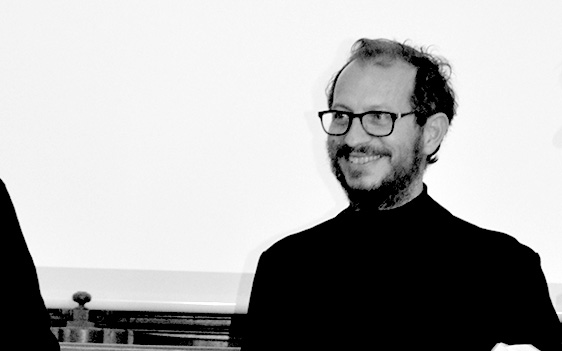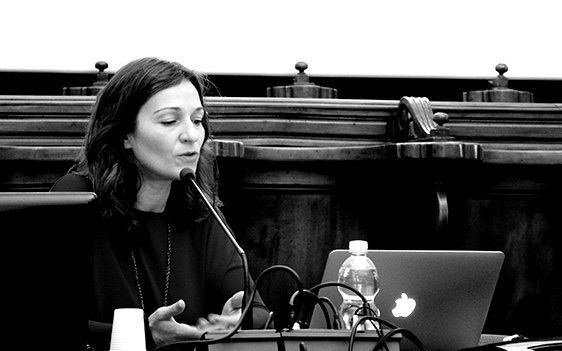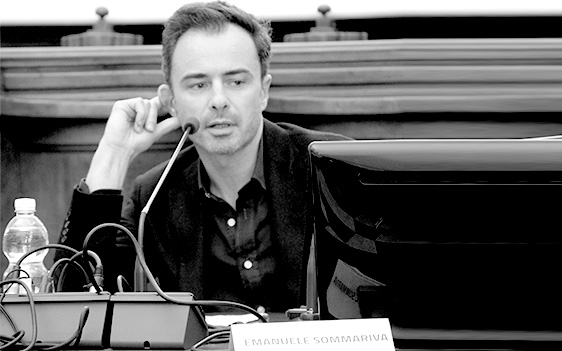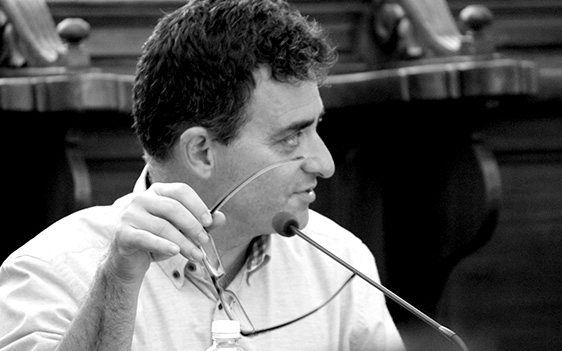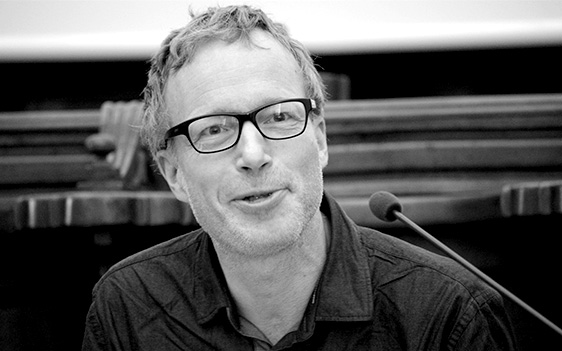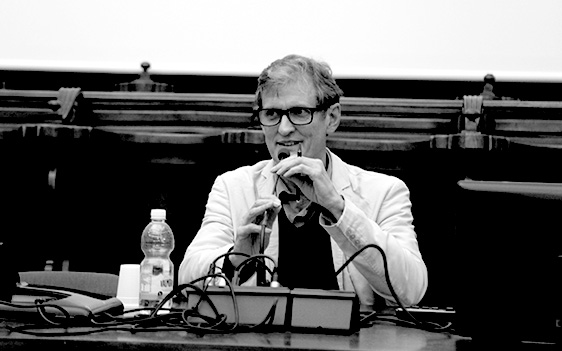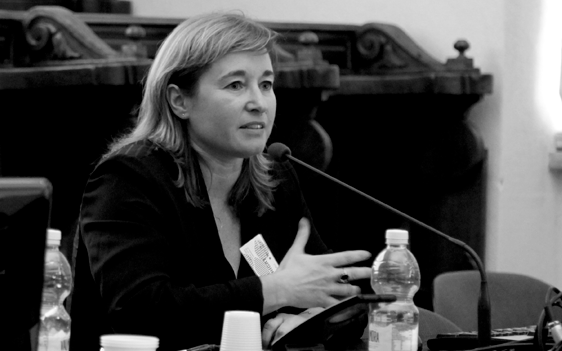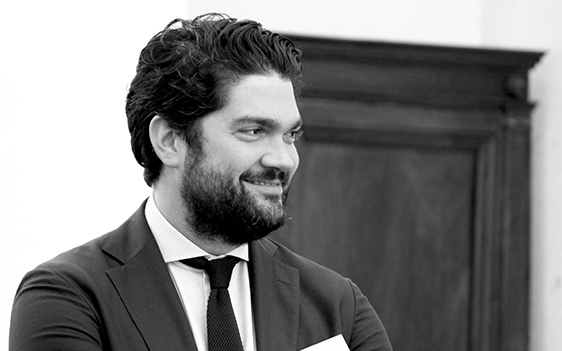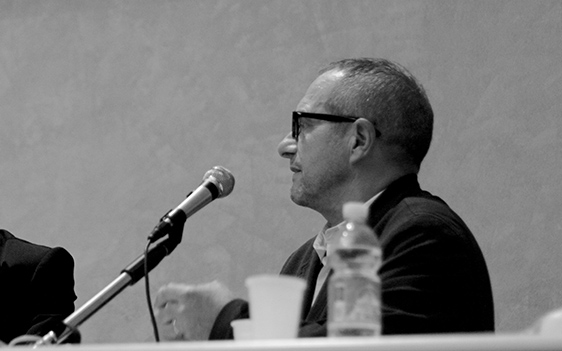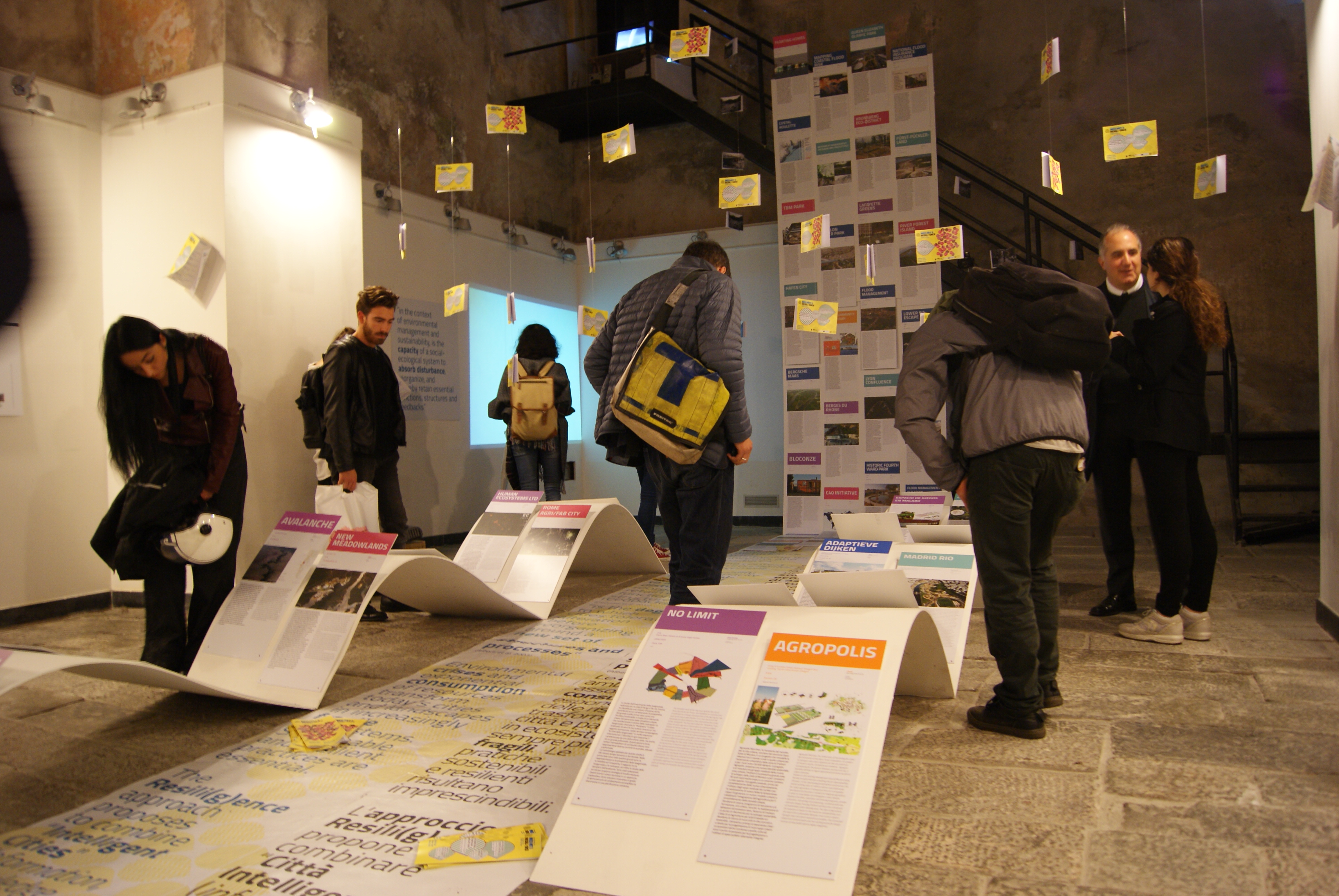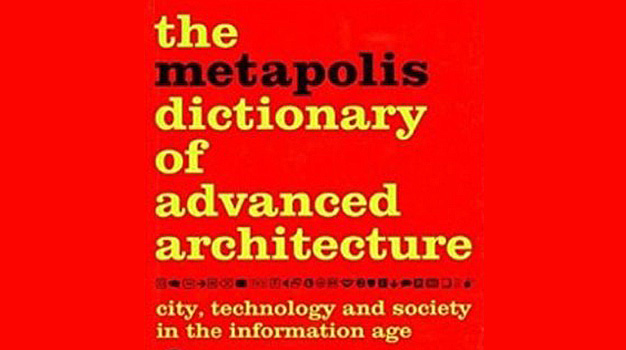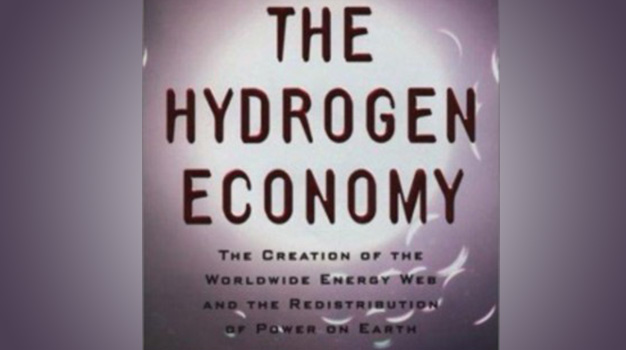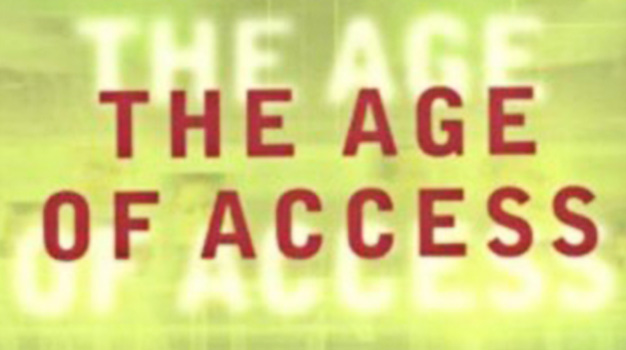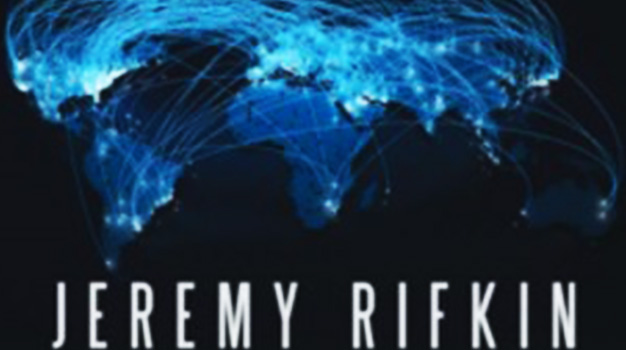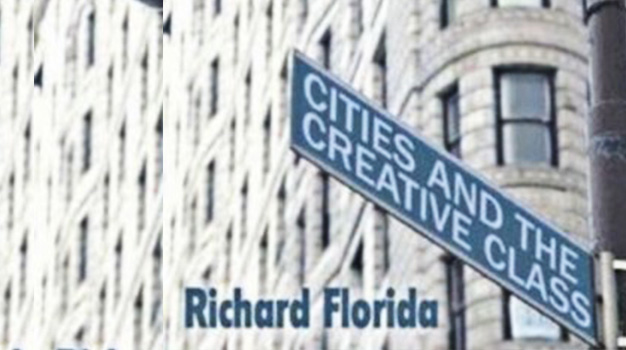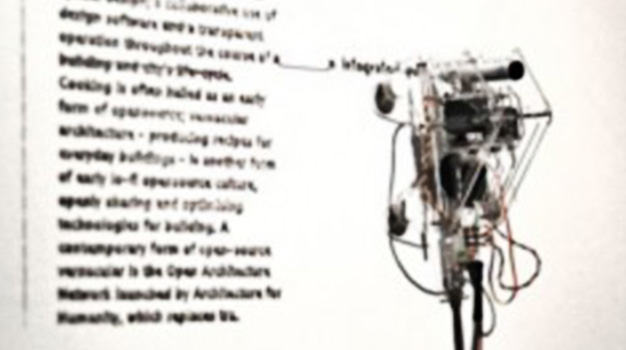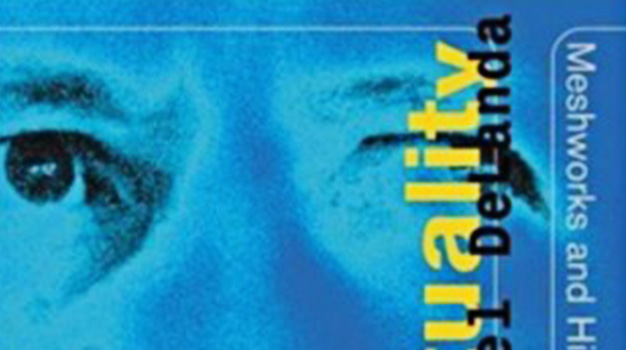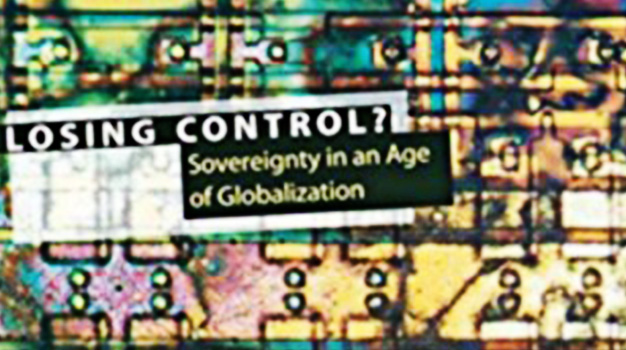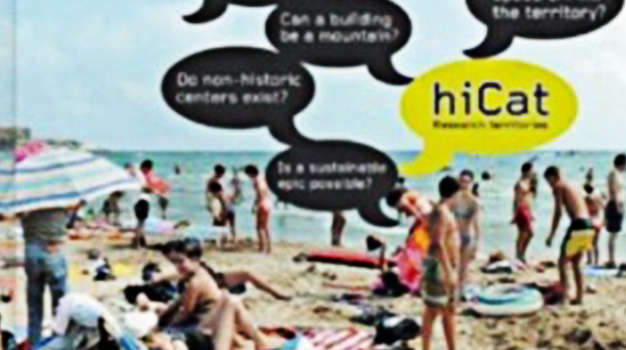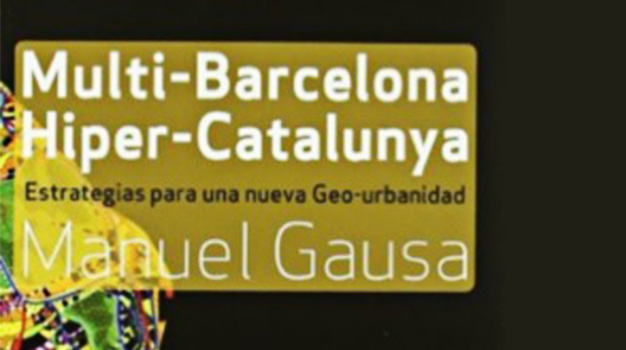In the framework of the ADD (Dottorato in Architettura e Design) and the Forum Med.Net activities, the first edition of the KAAU Symposium Resili(g)ence, chaired by Manuel Gausa, with Carmen Andriani and RaffaelaFagnoni, and coordinated by Nicola Canessa, Beatrice Moretti, AlessiaRoncoMilanaccio e GiorgiaTucci has contributed to create a plural and important event in the architectural debate. Fifteen outstanding keynote panel speakers, thirty call-speakers and international participants and more than 300 visitors (students, experts and professionals) animated the two-day sharing gathering, held in theGenova School of Architectura on the 26th and 27th of October 2016 and followed online by increasing spectators.
Download: D3.1 > report UNIGE Symposium Resili(g)ence
The approach to the development of a new Advanced Urbanism paradigm comes from the innovatory processing combination –in the last two decades– between the terms INFORMATION and INTERACTION, understood in all its dimensions, spatial environmental, social, technological and cultural. The notion of information appears, in this advanced approach, directly related with the capacity to manage complex programs and simultaneous solicitations, tendential parameters and environmental indicators, cultural tendencies and social dynamics, and, evidently, with the digital and computational increasing capacity to process, measure and optimise data in new anti-typological and open systemic approaches (integral and integrative) associated to a new Informational Urbanism. A new urbanism linked with a new urban intelligence understood as a new relational (and informational) capacity (reactive, responsive and strategic) able to process together urban data and visions in a new integrative and qualitative way: not only amulti-tool-urbanism linked with the new technologies (Smart) but an Empathic Urbanism associate to new analytic and synthetic (in contemporary) and multi-scalar researches in the fields of the urban prospection, the innovative expression (and representation), the environmental scope, the social integration and the citizens convivial relationships and bottom-up and networked processes; and connected, in particular, with the capacity to launch new strategic and integrative gazes (and methodologies) open to work with complex, irregular and dynamic territories. In this sense, the innovative input of this new methodological urban approach can be based in 3 lines of action, diverse but interconnected in-between them, that are opening the door not only to different changes of paradigms but also to new frameworks, instrumental tools applications and experimental outputs: A– Digital (& data-processing) innovation (PROCESSES & RECORDS) Changes of paradigms: from fixed representations to dynamic and evolutionary maps Frameworks: digital technologies and dynamic open-processes Tools: digital software – multilayer & informational processes Outputs > real-time open-processes > data-visualisation, data-orientation, data-applications B– Environmental (& eco-systemic) innovation (NETWORKS & SYSTEMS) Changes of paradigms: from land-uses planning to land-networked strategies Frameworks: complex structures and integrative networked-systems Tools: multilayer informational programs& matrixes – relational & responsive territorial structures Outputs > strategic scenarios > operational systems, strategic concepts C– Social (& bottom-up creating) innovation (ACTIONS, OPERATIONS, IMAGINARIES) Changes of paradigms: from participation to co-production Frameworks: social sharing dynamics and new collective behaviours Tools: relational structures – interactive experiences > active public & spatial devices and/or connected use(r)s Outputs > collective actions > interactive interfaces, relational programs & imaginaries This is the conceptual approach of the Genova unit partnership, in relation with the topic Advanced Urbanism. And –in its declination with the topic Resilience– this is the challenge: the capacity to combine “Intelligent Cities” (information, knowledge, projection and adaptability) and “Resilient Cities” (resistance and recycling, reaction and recovery, renovation and adaptation) in a new Resili(g)ent condition, sensible,sensorized and sensitive at time. During the Med.Net 03 Forum, ADD (Doctorate Program in Architecture and Design of UNIGE-Genova) has organized two days of scientific and creative meeting and exchange dedicated to promote a strategic vision about the theme of “resilience” and its innovative approach: International Symposium MED.NET. KAAU (Advanced Urban Strategies for Resilient Territories) and a SCIENTIFIC MEETING ADD-RESILI(G)ENCE (Global Med, Resili(G)ent Nets: Research Tables). Aims to get closer to a new strategic and prospective approach to the contemporary urban landscape, to its multi-scalar condition, its new “naturartificial” dimension and its operational revaluation. An approach linked to the importance of new technologies, as well as the integration between environmental and informational systems and the conception of a new functional complexity, programmatic and social, connected to a new ecological and sustainable sensitivity.
Throughout the RESILI(G)ENCE MEd.NET 3 meeting varied issues have been discussed and different experiences have been shown related to the possibility of combining urban intelligence and urban resilience as factors implicated with a more advanced urbanism and an innovating planning. As final conclusions various considerations could be highlighted. 0– ABOUT KEY-TERMS The six accepted main key-words for the Resilience notion can be understood, in the context of an innovative urban approach, through other synonymous-terms with similar but variable potentials, linked with some Intelligence parameters: 1- Anticipation… calling to Pre-vision and Pre-diction (that is to a new type of informational and processing record-mapping); 2– Adaptation… calling to Adaptability (more strategic and evolutionary, less categorical); 3– Resistance… calling to Endurance (more flexible and structural); 4– Absorption… calling to Integration (more relational and transversal); 5– Recuperation… calling to Reactivation (more dynamic and operational); 6– Regeneration… calling to re-information (more informational). Perhaps the best narrative example of resilience is the fable of La Fontaine Le Chêne et le Roseau, where a large oak brags to a fragile and slight rush of its power and showmanship to deal with nature, until an unexpected gust of wind from the north even his strength and initial resistance just thrown him, while the reed rocking, swaying and fluctuates, adapting to force the air-just keeping up. If for some point of view Resilience (engineering) can be understood as the capacity of a system to resist and absorb shocks, stresses and adversities coming back to an anterior or similar state, other vision (ecological) can understand Resili(g)ence as the capacity to react with shocks and stress and rebound and re-inform the system itself through the capacity of self-learning and (re)adaptation. In this semantic framework, other terms can help to define the different approaches of the different panels and lectures presented in the Symposium. I– ABOUT DIGITAL (& DATA-PROCESSING) INNOVATION (PROCESSES & RECORDS) 1- PRECISION (Panel 1: Mapping-Managing) Or informational precision: as the capacity, today, of processing multiple and complex information, with objectivity, in real time conditions and with open source processes and technologies. Data-maps, Data-scapes, Data-sensors, Data-records, talk about a more ubiquitous intelligence and objective approach that permits a better management and recording of the information for more efficient informational contexts and environments, able to work with more anticipatory and comparative data-recognition and data analytics and synthesis. 2– VECTORISATION / INTENTION(ALISATION) (Panel 1: Managing-Planning) The role of these data-records, managed with precision, optimisation and efficiency, must be combined with the capacity to orientate and conjugate synthetic projections (this is with the capacity to “manipulate”, in the more procedural less than formal interpretation of the term, data-records and data-analysis) or better, to intentionalise (to vector) them in more qualitative and efficient scenarios. This intentionalisation of data processes implicate a new strategic gaze, where conjugate information, conceptualisation and projection –analytic data records and synthetic strategic scenarios– able to orientate dynamic and unpredictable situations in combined and innovative multi-strings (o multi-paths) city evolutions. II– ABOUT ENVIRONMENTAL (& ECO-SYSTEMIC) INNOVATION (NETWORKS & SYSTEMS) 3–ADAPTATION (CUSTOMISATION): (Panel 2: Planning-Landing) Today, systemic and global are landing in particular and specific (local and/or individual) declinations. – In terms of landscapes, lands and territories. – In terms of users – In terms of relations, representation an communication. The capacity to convert informational strategies in local operations, adapting themselves to multiple formats of recognition, adaptation and concretion, is in the base of new strategic gazes and methodologies. In front of the old “homologated” codes the action with new diversified and multivalent protocols permits this combination between “(in)causes” and “cases” or “cases” and “(in)causes”. 4- RESPONSIVITY/RESPONSIBILITY (Panel 2: Planning-Landing) In terms of environmental efficiency and conscience, these duet results today absolutely pertinent in all languages; the substitution of the abused “smart” adjective for cities and environments (as spaces linked overall with the management of information) and the goal of new more reactive and empathic approaches – where technologies and sensibilities, sensorisation and sensuality can work together in more responsive info-contexts – results fundamental in the contemporary urban research. 5– PLACE (Panel 2: Planning-Landing) In this context, the idea of place understood not only as a “site” or as a “landscape” but as a “field” of forces (an “interface” able to activate (inter) and (co) relations with the context, at all the levels) results basilar to insure qualitative equations between identities, latencies, spaces and new social behaviours.
III– SOCIAL (& BOTTOM-UP CREATING) INNOVATION (ACTIONS, OPERATIONS, IMAGINARIES)
6– MULTI-COMUNITIES (Panel 3: Designing-Socializing) We must evidence, in this sense, the importance of a new idea of communities, more diversified and anti-typological. More polyhedrical and multifacetic; non-homologate. 7– PUBLIC (ACTIVE) SPACES (Panel 3: Designing-Socializing) And we must evidence also the importance of a new kind of public spaces as active environments (ambiental and processal): not only representative, evocative or strictly functional but more ludic, productive and mixed infrastructures, eco, intra and infra-structural. The relation between urban design and this new kind of “active public spaces” –with a new conception “naturaratificial” of the landscape, as an operational topos linked with a new bolt ecology – becomes absolutely important to propose new urban resilient operations. 8– “TAKING-ADVANTAGE” DESIGN (Panel 3: Designing-Socializing) Design must be understood not only as a forma calligraphic action but as a strategic open process defined by flexible and synergetic operations of induction/(re)conduction able to work with threats and potentials at the same time.
IV– GENERAL OVERVIEWS
9– DE-CODIFICATION (combining “de-codification” – as an interpretation of data-records – and de(s)codification –as a re-interpretation, a transgression or a translocation/provocation– able to re-inform the old established/disciplined inertias. This “provocative/propositive” attitude (narrative, descriptive and operational) results fundamental to work with prevision and unpredictability (in all the senses, at the same time); with rigor and imagination, technology and creativity. 10– CREATIVITY/INNOVATION When we are confronted with the usual measurable indicators of the sustainability, associated to the record of our environmental resource approaches (water, energy, matter, Co2 effects, economy, mobility, social parameters or land-use dynamics) we manage apparently objective and comparative data. It seems that the term “Creativity” (subjective and cultural) can not be consider as a scientific sustainable indicator, specially in some contexts where ecology is synonym of “conservatism”. But the progress of knowledge implicates a “creative factor”, not as a “singular extravaganza” but as an operational innovative implication. Where the innovation is the risk is also. The sustainable resilience is also the capacity to accept (and recover) the unexpected, and the sustainable intelligence is the capacity to evolve, in interaction with the environment, accepting the risk of the new as a part of this evolving feed-back process; accepting and enjoying the innovation as a part of our human capacity, able to process the risk and to re-inform the system it self. To insure more efficient and sustainable urban systems, creativity, imagination, and operational new expressions (and pioneer experiences), could have to be part of our best habitat-environments.
Speakers
MAPPING/MANAGING Urban Mediation
I’m gonna share with you one of the story that have marked my life: since…
MAPPING/MANAGING Behind a city map
What is the smart city concept? We use technology, we want to improve quality of…
THE AUGMENTED CITY
Talking about resilience in a fragile territory like Italy today, it seems very difficult and…
PLANNING/LANDING Responsive Environments
Talking about adaptations, I want to introduce the idea of responsiveness as a kind of…
PLANNING/LANDING Infra-Structure
Going through images and projects I will show you the research we made for an…
PLANNING/LANDING | Thoughs on “Advanced Urbanism”
Italo Calvino, in his book of 1988, LezioniAmericane, wrote six memos for the 21th century,…
PLANNING/LANDING | Beyond Rural Design “LANDRAUM”
In contemporary age urbanisation is growing increasingly. How do rural and urban lifestyles and settlement…
DESIGNING/SOCIALIZING | Madrid Rio 2005 – 2015
II will talk about Resilience and Infrastructures of public space in Madrid. The restoration of…
COSMOPOLITAN LOCALISM | Scenarios of resilient sustainable societies
The world resilience is becoming more and more popular today. The importance of the concept…
DESIGNING/SOCIALIZING | Resilience & New Technology Question of Community, Locality, Time and City
In the last years the biggest change is the influence of technology in our society.…
GENERAL LECTURE #1 | ADAPTATIONS
The topic of my lecture is Adaptation and, first of all, I want to go…
GENERAL LECTURE #5 | THE ETHERNAL PRESENT
In the movie “Only Lovers left Alive” (2013) two vampires live in Detroit in a…
GOA RESILI(G)ENT CITY 25 October – 7 November 2016
In the context of the Genova Science Festival and in the framework of the Forum Med.Net 3 Resili(g)ence within the European Project ERASMUS KAAU, the exhibition GOA RESILI(G)ENT CITYpresents projects able to induce qualitative actions in the Italian context and for resilient cities in general. More than 70 key Studies and Environmental Documents to favour a social conscience for a responsive and responsible development of the city More informations: http://www.festivalscienza.it/site/home/programma/eventi-per-tipo/mostre/citta-intelligenti-e-paesaggi-resilienti.html
Exhibition Gallery
MED.NET 3 – RESILI(G)ENCE STUDENTS REPORT This report wants to collect the “students vision”: their own synthesis, their interpretation of the meeting and the main outputs that – for then– were presented and discussed in this important event oriented to meet together not only academic structures, experts, firms, professors and researchers (with specific and operational interests) but, also, the new energies of the grade-students in Architecture and Design, susceptible to contribute with a new open, implicate and fresh gaze (throughout this document and the first intuitons opresented in the Proactive Resili(g)ence, Blitz Workshop Record) to this transversal proposal. The report –that we are introducing here–brings-in the same structure of the KAAU-Symposium, synthesizing the different approaches and contributions (lectures, panels, discussions) that have been presented.Starting off a common lay-out and guide-line every group of students has developed its own specific record in a plural mosaic of interpretations and presentations that we have considered important to maintain.
Recommended reading
Animate Form by Greg Lynn
Animate Form is a book and interactive CD-ROM of recent architectural projects designed by Form,…
The Metapolis Diccionary of Advanced Architecture
The Metapolis Dictionary of Advanced Architecture is an enlarged version of the Spanish edition and…
The Rise of the Network Society by Manuel Castells
This first book in Castells' groundbreaking trilogy, with a substantial new preface, highlights the economic…
The Hydrogen Economy: The Creation of the Worldwide Energy Web and the Redistribution of Power on Earth by Jeremy Rifkin
The message of The Hydrogen Economy is resoundingly simple: The earth is depleting its oil…
The Age Of Access: The New Culture of Hypercapitalism, Where All of Life is a Paid-For Experience by Jeremy Rifkin
Visionary activist and author Jeremy Rifkin exposes the real stakes of the new economy, delivering…
The third industrial revolution by Jeremy Rifkin
The price of energy and food is climbing, unemployment remains high, the housing market has…
Self-sufficient City: envisioning the habitat of the future by Vicente Guallart
“ The internet has changed our lives, but it hasn’t changed our cities, yet. In…
Cities and the creative class by Richard Florida
In the seven essays of Cities and the Creative Class - four of which have…
Open Source Architecture Manifesto by Carlo Ratti, Joseph Grima
As part of the special report on open-source design published in issue 948, Domus approached…
Real Virtuality: Meshworks and Hierarchies in the Digital Domain by Manuel de Landa
With the development of the Internet, a way of thinking once reserved for philosophical and…
Losing Control?: Sovereignty in the Age of Globalization by Saskia Sassen
What determines the flow of labor and capital in this new global information economy? Who…
The Limits to Capital by David Harvey
The Limits to Capital provides one of the best theoretical guides to the history and…
Hicat Research Territiories by Gausa, Guallart, Muller
HiperCatalunya analyzes every component of a territory, using Catalonia as a case study but saying…
Hiper-Catalunya. Estrategias para una nueva Geo-Urbanidad by Manuel Gausa
Manuel Gausa, keeps on, in this new book, his sensitive work of considering themes regarding…
Multiramblas by Bianchini, Falcon, Gausa
Multiramblas, 6TS Barcelona is a research produced by a “Intelligent Coast” for DHUB – Design…


